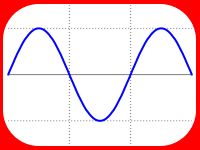Team:Montreal
From 2008.igem.org
(→iGEM Project 2008) |
(→Background) |
||
| Line 17: | Line 17: | ||
[[Image:Small mcgill igem.jpg|right]] | [[Image:Small mcgill igem.jpg|right]] | ||
| - | [[Image:mcgill_osc.jpg||thumb|left|300px]]Although typically used to describe physical phenomena, oscillations are also observed in a range of biological processes such as the circadian rhythm, neuronal communication and nephron function. [http://www.aph.caltech.edu/people/elowitz_m.html Elowitz] and Leibler ([http://www.aph.caltech.edu/people/Repressilator.pdf 2000]) postulated that a relaxation oscillator system called the Repressilator, composed of three genes (λcI, TetR, LacI) tied in negative feedback loops, would generate oscillations in protein expression within ''Escherichia coli''. Using one of these genes (TetR) linked with a Yellow Fluorescent Protein (YFP) gene to create a reporter plasmid, we expect to see the cells blinking over time as the concentration of the relevant proteins in the cell fluctuate. | + | [[Image:mcgill_osc.jpg||thumb|left|300px | A sinusoidal wave demonstrates a circadian rhythm]]Although typically used to describe physical phenomena, oscillations are also observed in a range of biological processes such as the circadian rhythm, neuronal communication and nephron function. [http://www.aph.caltech.edu/people/elowitz_m.html Elowitz] and Leibler ([http://www.aph.caltech.edu/people/Repressilator.pdf 2000]) postulated that a relaxation oscillator system called the Repressilator, composed of three genes (λcI, TetR, LacI) tied in negative feedback loops, would generate oscillations in protein expression within ''Escherichia coli''. Using one of these genes (TetR) linked with a Yellow Fluorescent Protein (YFP) gene to create a reporter plasmid, we expect to see the cells blinking over time as the concentration of the relevant proteins in the cell fluctuate. |
===McGill iGEM Projects 2006 & 2007=== | ===McGill iGEM Projects 2006 & 2007=== | ||
Revision as of 23:28, 2 August 2008
| Home | The Team | The Project | Parts | Notebook | Modeling | Links | Sponsors |
|---|
Contents |
Project Overview: Elucidating an Experimentally Viable Repressilator
Background
Although typically used to describe physical phenomena, oscillations are also observed in a range of biological processes such as the circadian rhythm, neuronal communication and nephron function. Elowitz and Leibler (2000) postulated that a relaxation oscillator system called the Repressilator, composed of three genes (λcI, TetR, LacI) tied in negative feedback loops, would generate oscillations in protein expression within Escherichia coli. Using one of these genes (TetR) linked with a Yellow Fluorescent Protein (YFP) gene to create a reporter plasmid, we expect to see the cells blinking over time as the concentration of the relevant proteins in the cell fluctuate.McGill iGEM Projects 2006 & 2007
The two-gene intercellular oscillatory system (McMillen 2002) examined in past projects developed irregular, triangular-shaped oscillation curves over extended periods of time. In an effort to improve the consistency and regularity of the oscillations, the Repressilator will be used. The system in theory should have better long-term fidelity in oscillation patterns and develop a more natural sinusoidal oscillatory pattern. Despite the foreseeable advantages of Elowitz's theoretical system, the repressilator has yet to be reproduced empirically; in addition, theoretical models indicate that, in general, these synthetic oscillatory systems in bacteria degrade and become irregular, unlike the natural physiological oscillations of larger lifeforms.
iGEM Project 2008
Building on previous years of research, the McGill University iGEM team intends to construct a set of Biobricks that will mimic the repressilator behavior and maintain synchronous oscillations in a large population of cells. If accomplished, our theorists and experimentalists will cooperate to refine this system using various modifications to further our understanding of biological clocks and their functioning.Relevance and inspiration
While it may be presumptuous to call Elowitz's Repressilator the proverbial 'Holy Grail' of modern bioengineering, parallels can be drawn between these two that tempt the leap to association. The Repressilator, often theorized about but never reproduced in a laboratory, is a crucial stepping stone towards a true understanding of synthetic oscillatory systems and the road towards creating a synthetic system that emulate the natural. Innumerable past, present and future bioengineering projects in iGEM and the real scientific community focus and revolve around this concept and its applications. By exploring the fundamental theory through mathematical models and empirical observation, we hope to understand the nature of these systems and develop future synthetic applications. •
 "
"


